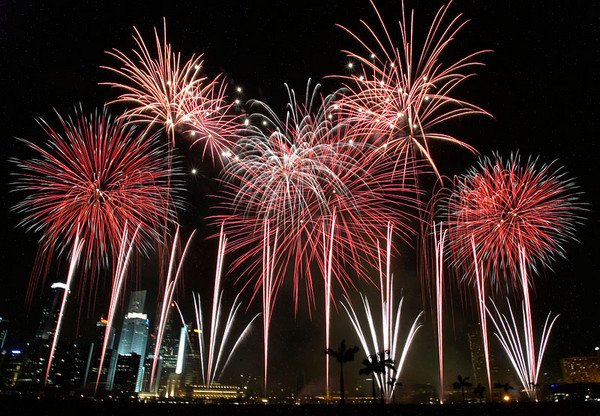With the Fourth of July weekend around the corner, it’s time to start thinking about how to take the best fireworks photos. There are typically just two opportunities per year to photograph fireworks so make it count if you want to capture some world class photos.
For photography buffs, this rundown might seem like old hat, but it never hurts to review. For beginners or first-time fireworks photographers, these tips will have you shooting like a pro. Here are 15 ways to create great fireworks photos.
RELATED: How Wildlife Photography Improved My Hunting
Use the right equipment
If you haven’t already guessed, an iPhone is not going to cut it when trying to get expert shots of fireworks. You’re going to need an SLR camera with manual shooting mode and a good sturdy tripod.
Use a remote release
For the best fireworks photos, you’re going to want to hold your shutter open for 1-10 seconds. For this reason, you should always use a remote release button so that your finger doesn’t jostle the camera when you press the shutter.
Scout ahead of time
For a truly great fireworks photo, framing is everything. Scout out the location where you plan to shoot before the sun goes down so you have a good idea of how you want frame the shot. Look for a structure like a pier or bridge to frame in the background.
Pay attention to framing
It’s important when using a tripod to be sure you framing is straight. Check the horizon lines to and line them up parallel with the top or bottom of your frame. Be sure to also leave enough room in your framing to account for the height of the blasts.
Vertical or horizontal?
It’s a good idea to decide ahead of time whether you’ll be shooting vertically or horizontally. Most of the time fireworks look best with vertical framing, but if there is something in the background you want to capture it may serve a horizontal frame better.
Focal length
Set the focal length usually at the widest available to capture the most action. You can always crop later.
Manual focus
Turn off your auto-focus feature so that the camera does not try to keep refocusing, which can lead to blurry images. Turn your lens to manual focus. Assuming you’re a fair distance away, you shouldn’t have to change your focus at all during the display.
ISO
Your ISO setting should be at 100 or 200 to minimize noise.
Shutter speed
The shutter speed is where you are going to affect how much arch and movement of the fireworks you’ll capture. A good rule of thumb is keeping it to 2-10 seconds.
Aperture
Now when it comes to aperture, this can be tricky. It’s best to experiment with various settings depending on available light and how long you intend to leave the shutter open. Most photographers have luck with a medium to small aperture, anywhere from f/8 to f/16. One way to experiment is to shoot in T mode and set the ISO and shutter speed while allowing the camera to adjust aperture.
Turn off long exposure noise reduction
This feature helps reduce noise levels in long exposure shots, but for fireworks there is too much happening at once for this to be effective. Turn this function off so that you do not experience a delay when shooting.
Shoot mostly in the beginning
As the fireworks display goes on, smoke often fills the sky. So try doing most of your shots in the beginning when the sky is clear. But don’t forget the grand finale.
Experiment with zooming
While most of your shots will be shot at a wide angle, it pays to experiment with close up shots. You’d be surprised at what you might come up with.
Use a neutral density filter
If it’s not completely dark out, you’re going to have a tougher time with longer shutter speeds because your shots will be overexposed. To get around this, try using a neutral density filter. This will cut down on the light and still get the effect you’re after.
Shoot in raw image mode
Shooting in raw image mode allows the most flexibility for post processing. Hey, you never know. You might just win an award.








